
But the depiction of witches really isn’t quite so simple as all that. For one thing, they’re not always malevolent forces in cinema. Nor are they all ancient and withered. Or even women, for that matter. The modern witch, in fact, can be whatever the story requires her (or him) to be. Witches can be protagonists, or comic relief. They can start delivery services or repel the Nazis from England’s shore (provided they’re also Angela Lansbury—more on that below). They can star at the heart of multi-billion dollar box franchises, or go back to their roots to give us some of the best of modern, indie horror. Witches can do it all.
So with that said, let’s count off the 30 best movies about witches.
30. Maleficent (2014)
Director: Robert Stromberg

What little curiosity value Maleficent provides arrives mostly in the extravagant visual design. It’s not a patch on the landmark work in Disney’s Sleeping Beauty—still one of the most striking animated films ever made—but something to behold nevertheless. Consider it both a strength and a weakness that Stromberg clearly put so much effort into the film’s visual design (largely, it seems, at the expense of story), and his top-notch collaborators include makeup whiz Rick Baker (who designed Angelina Jolie’s witchy nose, horns and severe cheekbones), costume designer Anna B. Sheppard and production designers Gary Freeman and Dylan Cole. Their efforts vividly bring the fairy tale settings to life, updating one of Disney’s original witchy antagonists for the modern age. —Geoff Berkshire
29. I Married a Witch (1942)
Director: René Clair
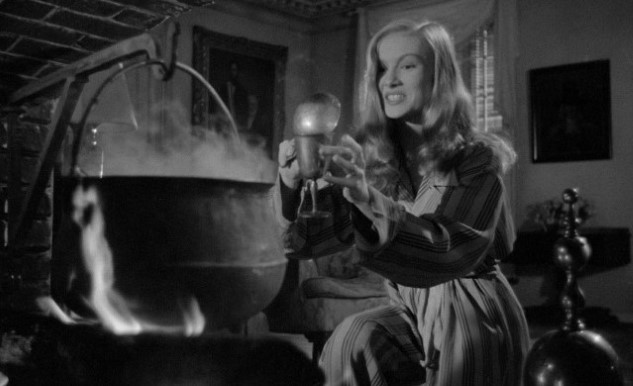
You can thank the Criterion Collection for reviving modern interest in this curious, noir-tinged little comedy, which had largely been washed away into obscurity despite the presence of stars Fredric March and Veronica Lake. Amusingly, the synopsis hardly sounds like a comedy at all: The film revolves around a witch and her father who were executed in colonial America for practicing the dark arts, only to be resurrected in the 1940s, where they hound the descendent of the man responsible for their deaths. As in the later Bell, Book & Candle, the farcical use of magic is played for laughs but is oddly sinister at the same time—it is first used to nudge a man into infidelity, and later to encourage voter fraud in an election. Regardless, you’re watching it today to see ’40s bombshell Veronica Lake at the height of her powers, looking effortlessly glamorous in her signature peek-a-boo hairstyle a year after Sullivan’s Travels made her a household name. Despite the decidedly silly plot, Lake’s impeccable charm is hard to resist. —Jim Vorel
28. Practical Magic (1998)
Director: Griffin Dunne

The word “witch” doesn’t just describe the cackling, potion-brewing figure from folklore. It can also be a hateful epithet, leveled at any woman who rejects the scorn society levels at the girls who won’t stay quiet and pretty and demure. Practical Magic may go all over the map with the plot and tone in a story about Sandra Bullock and Nicole Kidman’s orphaned witch sisters and their struggles with life and romance, but that subtext of reclaiming your autonomy is there throughout the whole picture. Magic is strange and dangerous in untrained hands in Practical Magic, likely to result in unforeseen consequences if used selfishly. It’s also the way these sisters come to one another’s aid and banish the negativity from their lives. If your choices are being a good little girl or nuking the lingering spirit of your ex-boyfriend and literally sweeping his ashes out the front door while the ladies of the town cheer, then it’s not hard to see why some women choose to be witches. —Kenneth Lowe
27. Bell, Book & Candle (1958)
Director: Richard Quine
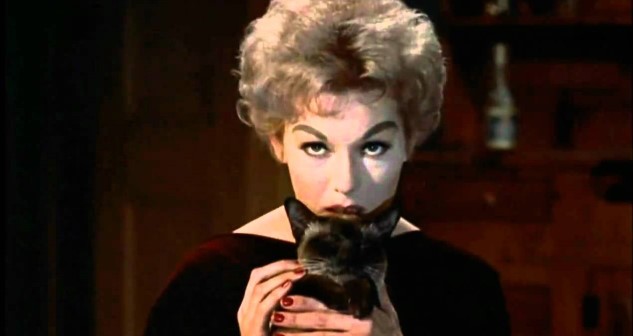
It’s strange to think that mere months after starring opposite each other in Hitchcock’s masterfully suspenseful Vertigo, Jimmy Stewart and Kim Novak were reunited for a romantic comedy about urban witches. Widely considered to be the last time Stewart played a true romantic lead in his career (he was 50 at the time), the film is instead dominated by the icily seductive Novak, playing a Bohemian witch-about-town who decides to muck about in Stewart’s love life, chiefly for petty revenge. Of course she falls for the much-older man along the way, leading to a choice between retaining her witchy powers or giving in to love. The whole thing is played as a chastely “sexy” farce, but it’s simultaneously the type of story you really wouldn’t be able to position as a light comedy today—the “love spells” and repeated threats of magical, forced seduction feel a bit strange to watch in the #MeToo era. Still, along with the previously mentioned I Married a Witch, Bell, Book & Candle managed to lay the groundwork for the “magical domesticity” genre you’d later see in Bewitched and I Dream of Genie. —Jim Vorel
26. Into the Woods (2014)
Director: Rob Marshall
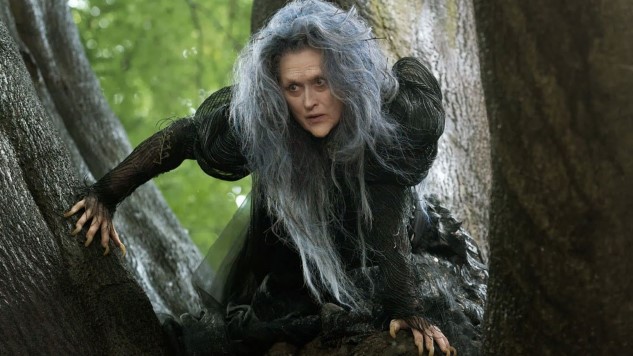
Film adaptations of beloved musicals are almost always polarizing; to succeed, the movie must simultaneously capture the magic of the stage while bringing something visually new to the proceedings. Movie stars take the parts of talented stage actors, sometimes to the detriment of the music. But the fantastical nature of Disney’s Into the Woods leads to a visual spectacle, and the cast—including James Corden, Emily Blunt, Meryl Streep, Johnny Depp, Anna Kendrick—does a fine job with the songs. Streep is especially enjoyable as the story’s vindictive witch. The real joy here is seeing a Disney fairytale that satirizes Disney fairytales, but with half an eye on its tween-set base, it’s never quite as wickedly dark as Stephen Sondheim’s original. Still, it’s a refreshing twist to see the princesses taking control of their own destinies, and the humor of princes just a little too in love with their own charm won’t be lost on even the youngest audiences. —Josh Jackson
25. Bedknobs and Broomsticks (1971)
Director: Robert Stevenson
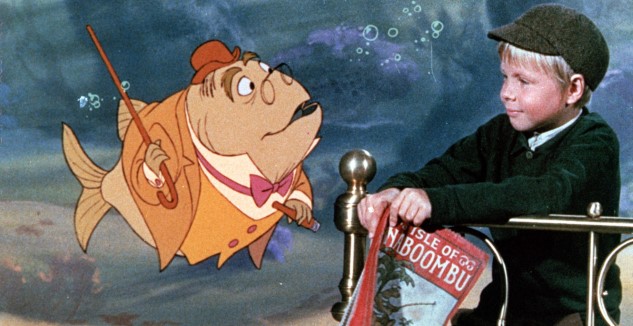
The easiest way to sum up Bedknobs and Broomsticks is basically to say it’s Mary Poppins, except on half the budget and double the LSD. What the folks at Disney were thinking when they conceived of a tale that involved witchcraft, hijinks and the Nazis invading England it’s impossible to say, but Angela Lansbury makes for a fine, matronly witch in training. Like Mary Poppins, the film can boast an animated interlude involving an island of anthropomorphized animals, their designs all suspiciously similar to Disney’s own Robin Hood, which would be released two years later in 1973. And did we mention this is all in service of finding a spell that Angela Lansbury can use to repel the Nazi invaders? Truly, the ’70s were a bizarre time for Disney. —Jim Vorel
24. The Chronicles of Narnia: The Lion, the Witch and the Wardrobe (2005)
Director: Andrew Adamson

The Lion, the Witch and the Wardrobe, more so than any of the watered down Narnia sequels that followed, did an admirable job of taking C.S. Lewis’ iconic series and interpreting its inspiring DNA to the screen, while leaving behind those elements the rank-and-file viewers would not necessarily care to consider—its Christian allegorical themes, most prominently. What we’re left with is to some degree a sanitized version of Narnia, but not in a way that has somehow been defiled—rather, it’s simply been broadened, simplified and made approachable for younger audiences. It’s certainly well cast—the Pevensie kids are the right blend of naive and likable, with the exception of the churlish Edmund; Liam Neeson is the lordly Aslan, who radiates power and gravitas; and Tilda Swinton could hardly be more icily menacing as Jadis, The White Witch. As it always has since the novel was first published in 1950, the film’s depiction of Jadis is chilling but seductive enough to make just about any kid wish they knew what Turkish Delight tastes like. —Jim Vorel
23. The Blair Witch Project (1999)
Directors: Eduardo Sánchez, Daniel Myrick
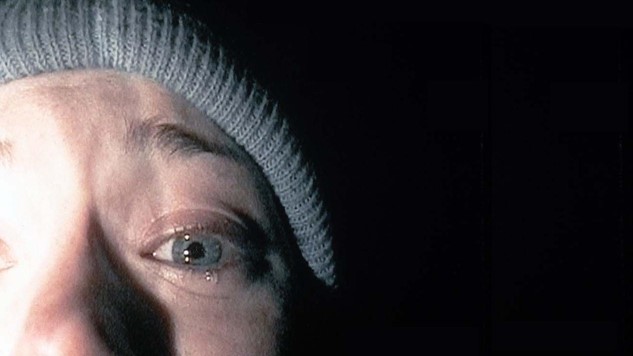
The titular “witch” in The Blair Witch Project, like so much else in the film, is ultimately whatever you want it to be. Unfairly derided in the years since its release, thanks to its part in launching the gimmick-laden found-footage sub-genre of modern horror, The Blair Witch Project was one of the ’90s greatest achievements in cinematic marketing. Taking advantage of the burgeoning internet era to spread rumors about the film’s origins and veracity, Blair Witch managed to convince otherwise normal people that they were sitting in a theater, watching a legitimate snuff film in wide distribution. The fact that it was never at all clear who (or what) “the witch” was, exactly, only heightened the sense of voyeuristic terror. All we knew is that there was something decidedly wrong about those woods, and the horror genre was never the same again. —Jim Vorel
22. The Sword in the Stone (1963)
Director: Wolfgang Reitherman

It’s a bit of a shame that Disney animated features of this period—your Robin Hoods and Sword in the Stones—haven’t quite maintained their classic status, often being relegated to the depths of the infamous Disney “vault,” unknown to younger generations whose exposure began with The Little Mermaid and the following Disney Renaissance of the 1990s. This Arthurian adaptation, loosely based on The Once and Future King, isn’t free from rough patches, but it has charm in spades despite a voice cast without any major stars. One might almost consider it a Harry Potter precursor, with a story that involves Arthur being transformed into various animals to learn life lessons from his tutor, Merlin. It certainly merits inclusion on a list of cinematic witches for the self-aggrandizing “Mad” Madam Mim, who Merlin eventually duels in one of animation’s best contests of magical shape-shifting. Although really, transforming into a virus to steal a win seems like a pretty cheap move. —Jim Vorel
21. Stardust (2007)
Director: Matthew Vaughn
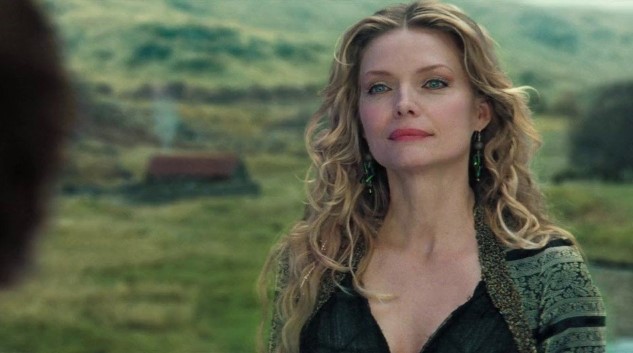
Only Neil Gaiman would write a setting where a steampunk-tinged high fantasy universe just so happens to exist next-door to a boring English hamlet in the mundane world, and anyone can cross between the two by hopping a five-foot stone wall. That’s the exact mixture of twee whimsy and light fantasy satire you find in Stardust, a somewhat overlooked, family-friendly romantic fantasy that seems increasingly eccentric in retrospect. This is, after all, the film that gave us Robert De Niro as a strangely cast sky-pirate named “Captain Shakespeare,” who we were meant to take seriously as an expert fencer, while future Marvel Daredevil star Charlie Cox serves as his padawan learner. The real reason to see the film, other than the radiant Claire Danes as the fallen star who is essentially the title character, is the deliciously evil Michelle Pfeiffer, the leader of a coven of witches who seek Danes’ heart as a means to preserve their youth. Pfeiffer taps into some of that old Batman Returns cattiness here, playing her role as a vampy sorceress to the utmost. Whenever she’s on screen, it’s a joy to watch her revel in her own villainy. —Jim Vorel
20. The Witches of Eastwick (1987)
Director: George Miller
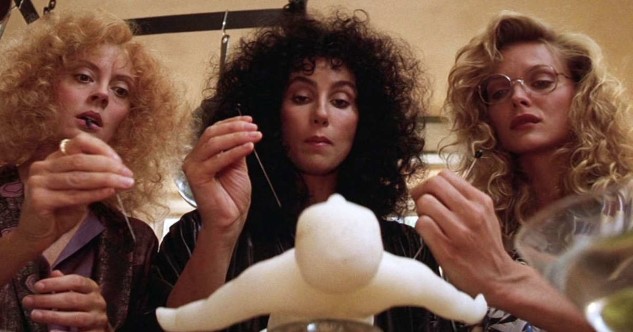
How witchcraft is depicted in film can seem highly contingent upon when and where that film is set. Colonial America? Get ready for a horror show of paranoia and suspicion, à la The Crucible or The Witch. If it’s modern high society, on the other hand, there’s a certain sex appeal inherent to witchcraft—an offhand metaphor for hedonistic women able to get exactly what they want, à la The Craft or Practical Magic. The Witches of Eastwick falls into the latter camp, buoyed by a vampy sense of charm and four leads who perfectly captured the moment: Susan Sarandon, Michelle Pfeiffer and Cher as a trio of comely witches alternatingly seduced/hounded by that most rakish of Old Scratch portrayers, Jack Nicholson. As the antagonist, Nicholson delights in the Earth’s tactile pleasures, luxuriating in causing misfortune along the way. If witches have historically been portrayed as the consorts of the devil, The Witches of Eastwick simply modifies that trope into a more modern one—here, they’re badass, jilted lovers. If Nicholson had a devilish hearse, you can be sure they’d puncture the tires and key the paint. It’s a film that delights in petty, feel-good vengeance. —Jim Vorel
19. Eve’s Bayou (1997)
Director: Kasi Lemmons
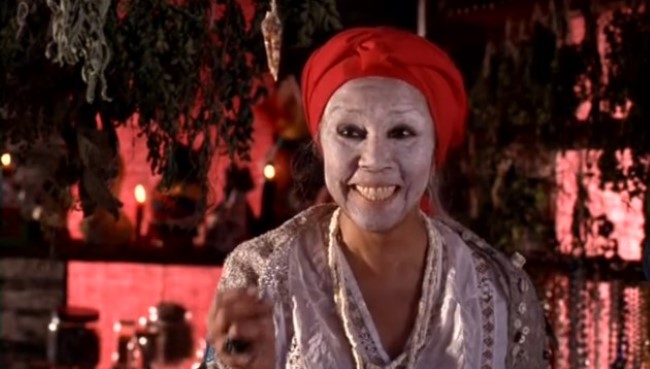
With slice-of-life in the ’hood films and romantic comedies being served in rapid succession in the late 1990s, Lemmon’s directorial debut is a tour-de-force flaked by outstanding performances from Jurnee Smollett, Debbi Morgan, Samuel L. Jackson and Lynn Whitfield. Smollett’s Eve Batiste experiences a chaotic and confusing summer of family revelations. Between her father’s profound infidelity and her older sister’s burgeoning womanhood, the 10-year-old begins relying on fortune telling and voodoo to right her family’s wrongs. But even though tragedy strikes the family in the end, there is a sense of rebirth for Eve and her sister. —Adreon Patterson
18. Witchfinder General (1968)
Director: Michael Reeves

Witchfinder General is one of those torture-centric horror films that caused a bonafide uproar in British society upon release, but would quickly seem (relatively) tame in the gonzo horror years to follow, especially in the U.S.A. Vincent Price stars in a role he always considered one of his finest performances, giving life to reviled witch-hunter Matthew Hopkins, who is estimated to have been responsible for the executions of 300 or more suspected witches in the mid-1600s. Unlike his earlier Edgar Allan Poe films of the ’60s, this is no campy performance in the vein of Roger Corman’s Tales of Terror or House of Usher. This is Price at his most stately, serious and sinister, embarking on a wave of brutal killings carried out in the name of religious conviction. It captures England during a period of unbridled mania and savagery. —Jim Vorel
17. The Craft (1996)
Director: Andrew Fleming
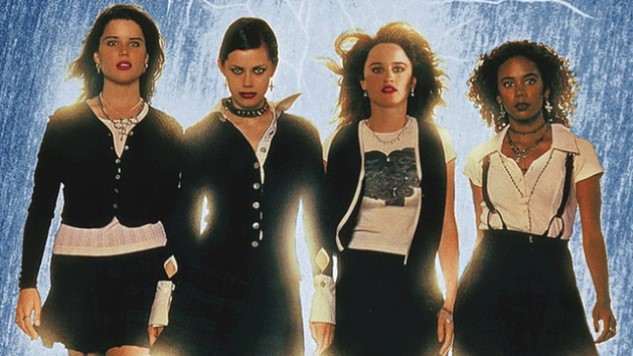
The Craft is one of those touchstones of ’90s, teen-friendly horror (see: I Know What You Did Last Summer) that has blossomed into the ranks of “cult films” in recent years, whether or not it really deserves the nostalgia. You can at least admire its deft evolution of John Hughes-era high school movie tropes, presenting an almost Mean Girls clique of girls with the added fun of witchcraft, although the inspiration might be more accurately attributed to the likes of Heathers. This film came along during that brief, odd period of the ’90s when “starring Fairuza Balk” was not an altogether weird thing to see on a movie poster, and it’s a better, quirkier film for it. We all know where the story is going, once these gals start dabbling in witchcraft for the causes of popularity and petty revenge—nobody gets away with being this bitchy in fiction. It’s hammy, and melodramatic, and protagonist Robin Tunney is easily the least interesting of her own clique, and yet The Craft is still oddly watchable today. It’s a well-preserved time capsule of a very specific moment in the twilight of the MTV Generation. —Jim Vorel
16. Witching & Bitching (2013)
Director: Álex de la Iglesia

What Shaun of the Dead did for zombies and What We Do in the Shadows did for vampires, Witching & Bitching essentially did for the cinematic depiction of witches, albeit on a less visible scale. Of the two comparisons, it’s Edgar Wright’s zom-com that rings more true of Iglesia’s Witching & Bitching, which is essentially a heist movie that takes a detour into cannibalistic witch country, with a side of absurdity. Full of solid performances from its Spanish cast, and infused with a quick wit and surprisingly gory streak, it’s a horror comedy that doesn’t skimp on splatter. You can’t quite take its witches seriously, but that won’t stop them from tying you to a spit and roasting you alive. —Jim Vorel
15. Snow White and the Seven Dwarfs (1937)
Director: David Hand
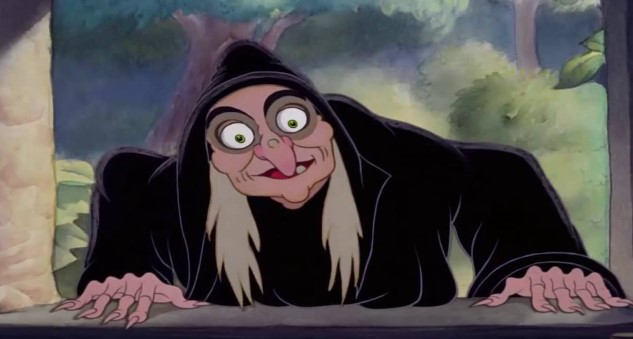
From the very beginning of the era of Disney animated feature films, witches have proven to be handy antagonists. Sleeping Beauty is one of the prime examples, but 22 years earlier, Snow White’s simplistic “Evil Queen” (whose actual name is apparently “Grimhilde”) laid the foundation for so many tropes to come. One gets the sense, watching this film today, that the animators wanted to depict the Queen as a classical, wart-nosed witch all along, but the film’s major plot device—that the queen is a desperate contender for “fairest of them all”—dictates that she can’t take on what might be considered her true form until she comes to Snow in disguise as a hunchbacked old crone. Her scheme to trick Snow into eating a poisoned apple seems appropriately biblical in nature, which only makes sense—given that witches were historically depicted as the consorts of Satan, the metaphor likely still resounded with those 1937 audiences. And indeed, the queen is eventually struck down by nothing short of a bolt of lightning, signifying the hand of God himself. This early in cinema history, you couldn’t exactly separate a witch from her scriptural damnation. —Jim Vorel




















Comments
0 comment